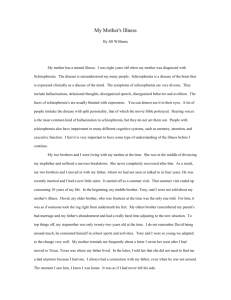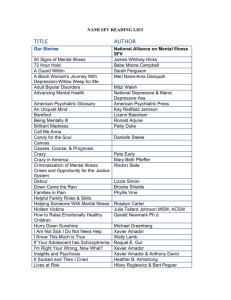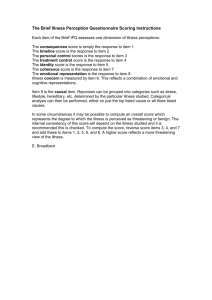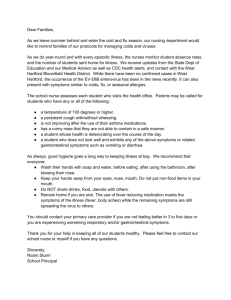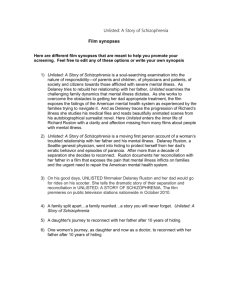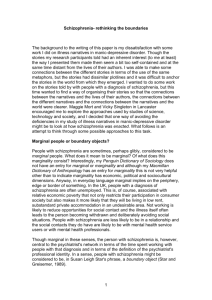Mental Illness as a Socially Constructed Disease
advertisement
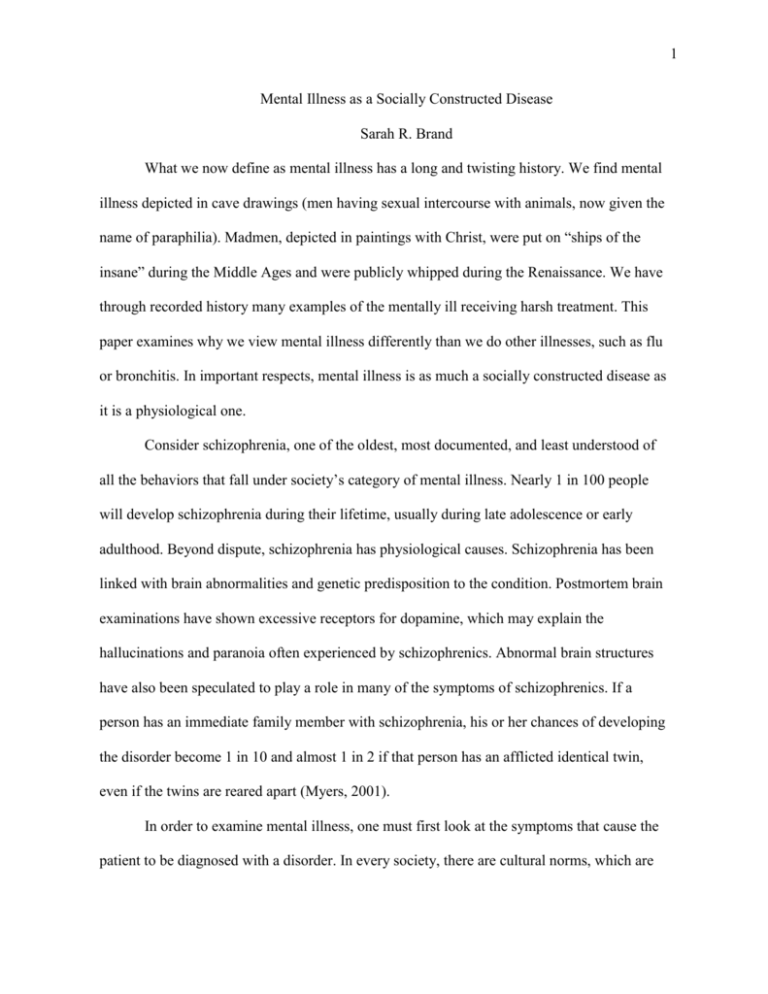
1 Mental Illness as a Socially Constructed Disease Sarah R. Brand What we now define as mental illness has a long and twisting history. We find mental illness depicted in cave drawings (men having sexual intercourse with animals, now given the name of paraphilia). Madmen, depicted in paintings with Christ, were put on “ships of the insane” during the Middle Ages and were publicly whipped during the Renaissance. We have through recorded history many examples of the mentally ill receiving harsh treatment. This paper examines why we view mental illness differently than we do other illnesses, such as flu or bronchitis. In important respects, mental illness is as much a socially constructed disease as it is a physiological one. Consider schizophrenia, one of the oldest, most documented, and least understood of all the behaviors that fall under society’s category of mental illness. Nearly 1 in 100 people will develop schizophrenia during their lifetime, usually during late adolescence or early adulthood. Beyond dispute, schizophrenia has physiological causes. Schizophrenia has been linked with brain abnormalities and genetic predisposition to the condition. Postmortem brain examinations have shown excessive receptors for dopamine, which may explain the hallucinations and paranoia often experienced by schizophrenics. Abnormal brain structures have also been speculated to play a role in many of the symptoms of schizophrenics. If a person has an immediate family member with schizophrenia, his or her chances of developing the disorder become 1 in 10 and almost 1 in 2 if that person has an afflicted identical twin, even if the twins are reared apart (Myers, 2001). In order to examine mental illness, one must first look at the symptoms that cause the patient to be diagnosed with a disorder. In every society, there are cultural norms, which are 2 both implicitly and explicitly stated. When a violation of one of these norms occurs, the violator is regarded as deviant. According to Becker (cited in Scheff, 1966, p.32), “deviance is not a quality of the act the person commits, but rather a consequence of the application by others of rules and sanctions to an ‘offender.’ The deviant is one to whom that label has successfully been applied.” Take the classic case of a man talking to God. Hearing voices and responding is a classic symptom of schizophrenia, a condition we know to have physiological causes. If the circumstances surrounding the situation were that the man was homeless and wearing dirty and torn clothes, he would be viewed one way. Were that man actually the Pope talking to God during the Easter service in Rome, he would be viewed quite differently. In order for the act of talking to God not to be labeled as deviant, it must take place under a socially proper circumstance, and must be conducted by a person recognized as legitimate. People who do not conform to these norms break the rules of our society. The classic behaviors of schizophrenia violate social norms. They are not necessarily underlying pathologies. By defining what behaviors are considered culturally acceptable, by deciding who can legitimately perform these behaviors, and by labeling norm-breakers as deviant, our society constructs mental illness. Almost all of the symptoms listed in the Diagnostic and Statistical Manual of Mental Disorders (DSM-IV) can be viewed not as psychological disturbances but as violations of cultural norms. According to Scheff (1975, p. 8), these symptoms “can be redefined as offenses against implicit social understandings.” According to the DSM-IV (American Psychological Association, 1994), in order to be diagnosed with schizophrenia, the person must meet the following criteria: 3 1. At least two of the following symptoms, each present for a significant portion of time during a one month period: a. Delusions. b. Hallucinations. c. Disorganized speech. d. Grossly disorganized or catatonic behavior e. Negative symptoms 2. Functioning markedly below the level achieved prior to onset. 3. Continuous signs of the disturbance for at least six months, at least one month of which includes symptoms in full and active form (p. 312). In many non-Western cultures, both delusions and hallucinations are regarded as signs of extreme religious power. It could even be argued that in the Bible, a core text of Western culture, Moses suffered from hallucinations when he thought he was talking to God or seeing someone in the burning bush. The same argument can be made about someone who exhibits disorganized speech or disorganized behavior today. Normality is a cultural construct. Symptoms that violate agreed-upon rules are viewed as abnormal. The person with more than two such symptoms for a predetermined amount of time is labeled mentally ill. What happens to the person so labeled? According to Scheff (1975, p. 10) and his labeling theory, “If labeling occurs (that is, if the rule breaker is segregated as a stigmatized deviant), the rule breaking that would otherwise have been terminated, compensated for, or channeled may be stabilized; thus the offender, through the agency of labeling, is launched on a career of ‘chronic mental illness.’” In our society, a career of chronic mental illness has many social stigmas attached to it that other physiologically caused conditions (like cancer) 4 do not. Examined in terms of this paper, the label of insanity may become self-fulfilling. On seeing everyone he contacts treat him as a "madman," the schizophrenic may retreat further into his condition in an effort to insulate himself from harsh social judgments. Through the example of schizophrenia, a disease with clear physiological causes, we have seen that mental illness can be understood as much as a socially constructed ailment as it can a physical one. That this is so exacerbates the illness and makes recovery that much more difficult: not only must sufferers deal with their illness, they have harsh societal judgments to overcome. 5 References American Psychiatric Association. (1994). Diagnostic and statistical manual of mental disorders (4th ed.). Washington, DC: APA. Myers, D. G. (2001). Psychology (6th ed.). Holland, MI: Worth Publishing. Scheff, T. (1975). Labeling madness. Englewood Cliffs, NJ: Prentice-Hall. Scheff, T. (1966). Being mentally ill: A sociological theory. Chicago, IL: Aldine Publishing Company.



